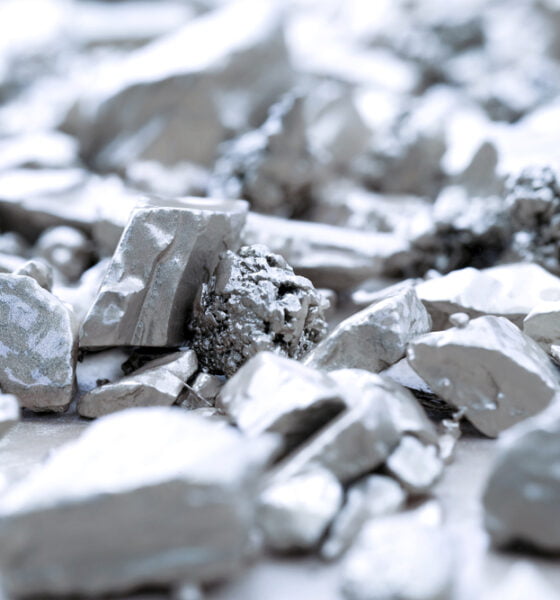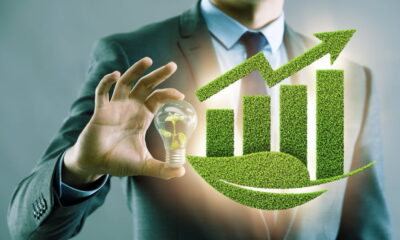

Features
What Eco-Friendly Investors Should Know About Trading Silver
There are many things that you have to consider when you want to live an eco-friendly lifestyle. We all want to do everything that we can to reduce our environmental footprint and do more to make the planet a better place.
However, we obviously have other priorities that need to be taken into consideration, such as investing. The good news is that there are a lot of eco-friendly ways to invest, which we have detailed in past articles like this. One of the ways that investors are being eco-friendlier is by investing in silver.
Silver Can Be a Great Way to Make Investing More Sustainable
A growing number of investors are buying silver bullion and futures. This could be a surprisingly good idea for those that care about sustainability. Ernst and Young reports that a growing number of silver mining companies are investing in eco-friendly solutions, which is an ideal way to attract eco-friendly investors.
Another reason for green investors to invest in silver is that silver is essential for many sustainable projects. For example, electric vehicles use silver for many of their components. Another advantage of silver is that it is recyclable.
The precious metals market, particularly the silver industry, has long been an area of interest for investors seeking to diversify their portfolios. Silver’s unique properties and historical significance have gained recognition as a valuable asset. Amidst economic uncertainties, silver offers a hedge against inflation and is an alternative investment channel.
This article delves into various strategies investors can employ to leverage opportunities in the ever-evolving silver landscape. By closely examining market trends, supply and demand dynamics, and emerging technologies, readers can gain valuable insights to make informed decisions and maximize their potential returns in the silver market.
The silver landscape
Despite being less popular than gold, silver holds a captivating allure for investors and consumers. Its high conductivity, ductility, and malleability make it vital in industrial applications, including electronics, healthcare, renewable energy, and photography. Additionally, its scarcity as an investment-grade metal adds to its appeal as a store of value.
The silver market is highly cyclical and depends on various factors such as economic conditions, global demand for industrial products, and geopolitical events. The gold-silver ratio also greatly influences its price, which measures the relative value of silver to gold. Historically, this ratio has been around 15:1. However, this ratio has increased significantly in recent years, with silver being relatively undervalued compared to gold.
Market trends and analysis
Understanding and analyzing current market trends is essential to devise effective strategies. The silver market has grown steadily in recent years, with an increasing demand for industrial and investment purposes. According to a report by CPM Group, the global silver supply deficit three years ago was estimated at 185 million ounces, the highest in four years. This deficit will continue in the coming years, providing a favorable environment for rising silver prices.
Another notable trend is the increasing demand for silver in renewable energy technologies. With the push towards clean energy sources, silver plays a critical role in solar panels and electric vehicles due to its high conductivity and durability. As more countries prioritize sustainability and reduce their reliance on fossil fuels, the demand for silver will likely increase significantly, creating potential investment opportunities.
Investing in physical silver
One of the most prevalent ways to invest in silver is through purchasing physical bullion or coins. This method offers tangible ownership of the metal, providing a sense of security for investors. Additionally, physical silver can be easily liquidated, making it a popular option for short-term investments or during economic uncertainty.
Investors can also leverage the gold-silver ratio to their advantage. This ratio has increased significantly in recent years, indicating that silver may be undervalued compared to gold. Investors can maximize their returns by purchasing silver when the balance is high and selling it when it decreases.
Silver stocks and ETFs
For those interested in investing in silver but would prefer something other than physical bullion, silver stocks and Exchange-Traded Funds (ETFs) offer a viable alternative. These investment vehicles expose silver price movements without the hassle of storage or insurance costs associated with physical ownership.
Investing in silver mining companies is another option for those looking to capitalize on the silver market’s potential. As demand for silver increases, these companies will likely see a rise in production and profitability, potentially leading to higher stock prices.
Silver IRAs
Individual Retirement Accounts (IRAs) are an excellent option for silver investors. With a Silver IRA, investors can hold physical silver bullion or coins within their retirement account, allowing for potential tax advantages and long-term investment benefits.
Investors can also transfer a gold IRA to a silver IRA, providing flexibility in diversifying their retirement portfolio. It is important to note that Silver IRAs must follow strict guidelines set by the Internal Revenue Service (IRS), so it is advisable to consult a financial broker or advisor before making any trading decisions.
This strategy not only serves as a hedge against inflation but also offers the potential for a more diversified portfolio, providing investors with additional security and peace of mind for their retirement planning. By including silver in an IRA, investors can tap into this precious metal’s potential growth and stability while enjoying the benefits of tax advantages and a well-rounded retirement portfolio.
Leveraging emerging technologies
Besides traditional investment channels, technological advancements have opened up new opportunities for investing in silver. The growing trend of digital currencies has brought about the concept of “silver-backed” cryptocurrencies. These digital assets are backed by physical silver, allowing investors to invest in silver while benefiting from blockchain technology and its growth potential.
Final thoughts
The silver industry continues to evolve, presenting investors with a dynamic and promising landscape. By understanding market trends, supply and demand dynamics, and leveraging emerging technologies, investors can identify potential opportunities to capitalize on the silver market’s growth.
Investing in physical silver or silver stocks/ETFs offers traditional options for those looking for tangible ownership or exposure to price movements. Silver IRAs provide tax advantages and long-term investment benefits, making them a popular choice for retirement planning. Additionally, emerging technologies have brought about new and innovative ways to invest in silver, catering to the evolving needs of investors.
As with any investment, it is crucial to carefully research and analyze potential opportunities and consult a financial advisor before making decisions. Silver’s unique properties and growing demand remain a valuable and attractive investment option in the precious metals landscape.


 Environment10 months ago
Environment10 months agoAre Polymer Banknotes: an Eco-Friendly Trend or a Groundswell?

 Environment11 months ago
Environment11 months agoEco-Friendly Home Improvements: Top 7 Upgrades for 2025

 Features9 months ago
Features9 months agoEco-Friendly Cryptocurrencies: Sustainable Investment Choices

 Features10 months ago
Features10 months agoEco-Friendly Crypto Traders Must Find the Right Exchange




























